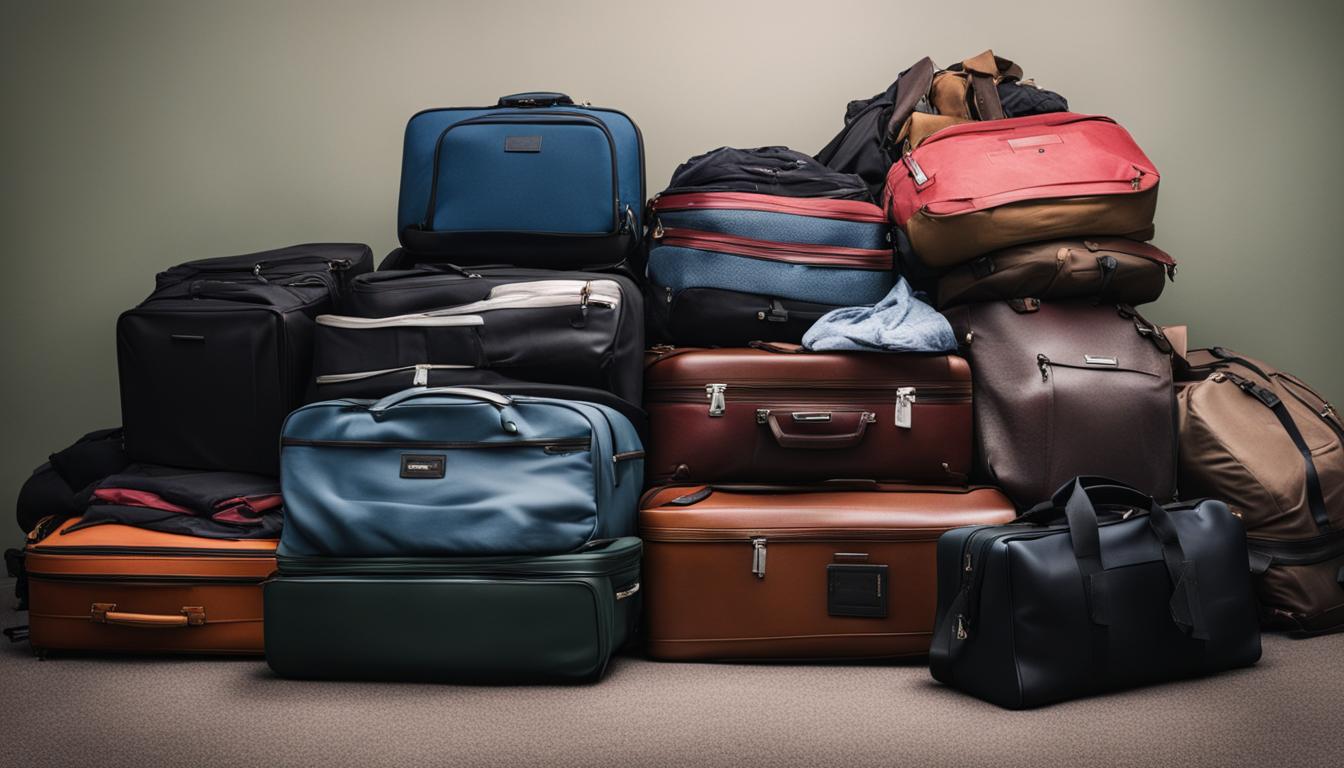Love and attachment are often confused and misunderstood concepts in relationships. While they may feel similar, there are distinct differences between the two.
Love is characterized by deep fondness, happiness in the presence of the loved one, commitment to their well-being, and an awareness of how words and actions affect them.
Attachment, on the other hand, is driven by how one feels about themselves and the degree of permanence and safety that the other person provides based on past relationships. It is more self-serving and focuses on how the other person satisfies one’s needs.
Understanding these differences is crucial for building and maintaining healthy relationships.
Key Takeaways:
- Love prioritizes the happiness and well-being of the partner, while attachment focuses on one’s own needs.
- Love is liberating and allows individuals to be their true selves, while attachment can be controlling and possessive.
- Love is lasting, while attachment is transient and can lead to resentment after a breakup.
- Recognizing the distinction between love and attachment can help individuals navigate relationships and build fulfilling connections.
Emotional Attachment vs Love
Understanding the difference between emotional attachment and love is crucial in navigating relationships. While they may appear similar, emotional attachment and love have distinct characteristics that set them apart.
Emotional attachment is a gradual process that develops over time. It involves a deep sense of bonding, comfort, and security. Individuals in an emotionally attached relationship experience feelings of calmness, happiness, and contentment. This attachment is driven by the need for stability and a sense of belonging. It provides a sense of safety and reassurance, making individuals feel cherished and supported.
Love, on the other hand, is a multifaceted emotion. It combines elements of infatuation, attachment, and cognitive changes. Love is often accompanied by physiological effects such as a racing heart, behavioral effects like caregiving, and cognitive effects like enhanced attention and memory of beloved-related details. Love goes beyond attachment and encompasses a deep fondness, happiness in the presence of the loved one, and a commitment to their well-being.
“Love is a journey that starts with attraction, blossoms with attachment, and deepens with a profound sense of care and commitment.”
Emotional Attachment vs Love: A Comparison
| Emotional Attachment | Love |
|---|---|
| Gradually developed | Can be instant or grow over time |
| Focuses on stability and security | Includes deep fondness and happiness |
| Driven by the need for a sense of belonging | Involves commitment and care for the other person |
| Provides comfort and reassurance | Enhances attention and memory of beloved-related details |
Recognizing and understanding the differences between emotional attachment and love can help individuals assess the nature of their relationships. It allows for an honest evaluation of the emotions and dynamics involved, promoting healthy and fulfilling connections.
Love and Attachment in Relationships
In relationships, love and attachment are two interconnected yet distinct concepts that shape the dynamics between individuals. Attachment styles, which are formed based on early bonds with caregivers, play a significant role in how individuals relate to others. Understanding these attachment styles can help individuals foster healthy relationships and address any insecurities or issues that may arise.
There are four main attachment styles: secure attachment, anxious attachment, anxious-avoidant attachment, and disorganized attachment. Secure attachment is considered the healthiest attachment style, characterized by trust, emotional intimacy, and effective communication. Individuals with secure attachment styles have a positive view of themselves and others, and they feel secure in their relationships.
On the other hand, individuals with insecure attachment styles may experience difficulties in relationships. Anxious attachment is characterized by fear of abandonment, need for constant reassurance, and a tendency to become clingy or possessive. Anxious-avoidant attachment involves a fear of intimacy and emotional closeness, leading individuals to avoid commitment and maintain emotional distance. Disorganized attachment results from inconsistent or abusive caregiving experiences, leading to difficulties in forming stable and secure relationships.
| Attachment Style | Characteristics |
|---|---|
| Secure Attachment | Trust, emotional intimacy, effective communication |
| Anxious Attachment | Fear of abandonment, need for reassurance, clinginess |
| Anxious-Avoidant Attachment | Fear of intimacy, emotional distance, avoidance of commitment |
| Disorganized Attachment | Inconsistent or abusive caregiving, difficulties in forming stable relationships |
Recognizing and understanding one’s attachment style is crucial in developing self-awareness and promoting healthy relationship dynamics. By identifying and addressing attachment-related insecurities, individuals can work towards building secure and fulfilling connections. Through open communication, empathy, and personal growth, individuals can navigate the complexities of love and attachment, fostering lasting and meaningful relationships.
Love vs Attachment: Key Differences
In relationships, it is important to understand the distinction between love and attachment. While they may seem similar, there are significant differences that can impact the dynamics of a relationship. Love is often characterized by selflessness, where individuals prioritize the happiness and well-being of their partners. It is a deep and genuine affection that involves a strong emotional connection.
On the other hand, attachment tends to be more selfish. It is driven by the desire to fulfill one’s own needs and find security in the relationship. Attachment can manifest in controlling behaviors and a fear of abandonment. Unlike love, which is liberating and allows individuals to be their true selves, attachment can be restricting and may lead to possessiveness.
Recognizing these differences is crucial for individuals to assess the nature of their relationships. Love promotes mutual growth, while attachment can lead to dependency and an unhealthy reliance on the other person. By understanding the distinctions between love and attachment, individuals can work towards cultivating love that is based on genuine care and mutual happiness.
| Love | Attachment |
|---|---|
| Characterized by selflessness | Driven by selfish desires and needs |
| Allows individuals to be their true selves | Can be controlling and restricting |
| Focuses on the happiness and well-being of the partner | Focuses on how the partner can fulfill one’s needs |
| Promotes mutual growth | May lead to dependency and possessiveness |
Love as Lasting, Attachment as Transient
Love and attachment can have contrasting effects on relationships, with love often being seen as everlasting while attachment is more transient in nature. Love, true and genuine, has the ability to survive the passage of time, remaining in one’s heart even after a relationship ends. It carries a sense of warmth, compassion, and genuine care for the well-being of the other person. Love is not dependent on external circumstances or conditions; it is a deep emotional connection that continues to wish the best for the person we once loved.
Attachment, on the other hand, holds the potential for resentment after a breakup. It stems from a sense of entitlement, where one believes that the other person had an obligation to make them happy. When expectations are not met, attachment can create feelings of anger, disappointment, and bitterness. Unlike love, attachment is often based on the fulfillment of personal needs and can be more self-centered in nature.
Recognizing the distinction between love and attachment is crucial for individuals navigating the complexities of relationships. It allows for a deeper understanding of emotions and behaviors, empowering individuals to heal from past attachments and foster healthier connections. By acknowledging the transient nature of attachment and embracing the enduring qualities of love, individuals can cultivate relationships based on genuine care, compassion, and mutual happiness.

Key Differences Between Love and Attachment
| Love | Attachment |
|---|---|
| Selfless | Selfish |
| Liberating | Controlling |
| Embraces the passage of time | Transient in nature |
Conclusion
In conclusion, understanding the difference between love and attachment is crucial for cultivating healthy and fulfilling relationships. Love is characterized by selflessness, freedom, mutual growth, and lasting feelings, while attachment tends to be more selfish, controlling, and transient.
By recognizing and assessing the nature of our emotions and behaviors in relationships, we can embark on a journey of personal growth and develop the ability to build connections based on genuine care and mutual happiness.
To foster healthy relationships, it is important to distinguish between love and attachment, as love survives the passage of time and continues to wish the best for the other person, while attachment can give rise to feelings of resentment after a breakup.
By embracing the distinctions between love and attachment, we can navigate the complexities of relationships with clarity and create lasting bonds that enrich our lives.
FAQ
What is the difference between love and attachment?
Love is characterized by deep fondness, happiness in the presence of the loved one, commitment to their well-being, and an awareness of how words and actions affect them. Attachment, on the other hand, is driven by how one feels about themselves and the degree of permanence and safety that the other person provides based on past relationships. It is more self-serving and focuses on how the other person satisfies one’s needs.
How do emotional attachment and love differ?
Emotional attachment is characterized by a positive, comforting feeling of bonding that develops gradually over time. It includes feelings of calmness, comfort, happiness, and security. Love, on the other hand, is a multifaceted concept that combines elements of infatuation, attachment, and cognitive changes. It involves physiological effects, behavioral effects, and cognitive effects.
What role do love and attachment play in relationships?
Love and attachment are significant in relationships. Attachment styles, formed based on early bonds with caregivers, greatly influence how individuals relate to others. There are four attachment styles: anxious attachment, anxious-avoidant attachment, disorganized attachment, and secure attachment. Secure attachment is considered healthy and leads to love in a relationship, while insecure attachment styles may cause difficulties.
What are the key differences between love and attachment?
Love is characterized by selflessness, where individuals prioritize the happiness and well-being of their partners. Attachment tends to be more selfish, focusing on how the other person can make them happy and fulfill their needs. Love is liberating, allowing individuals to be their true selves, while attachment can be controlling, leading to possessive behaviors and a fear of abandonment.
Is love more lasting than attachment?
Yes, love is often seen as lasting, even if a relationship ends. True love carries a place in one’s heart and continues to wish the best for the other person. Attachment, on the other hand, is transient and can lead to feelings of resentment after a breakup. Recognizing the distinction between love and attachment can help individuals navigate the complexities of relationships and heal from past attachments.
Why is it important to understand the difference between love and attachment?
Understanding the difference is essential for building and maintaining healthy relationships. By recognizing and assessing the nature of one’s emotions and behaviors, individuals can foster personal growth and develop fulfilling connections based on genuine care and mutual happiness.
 Skip to main content
Skip to main content


